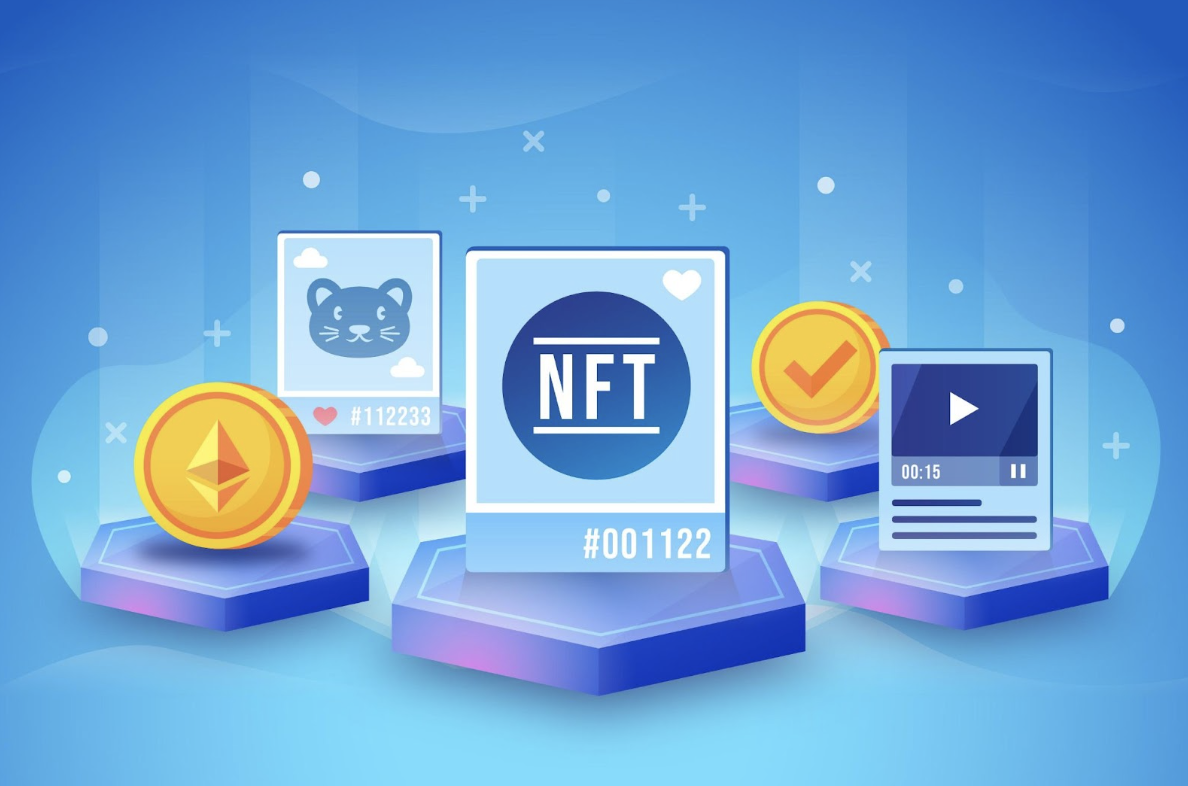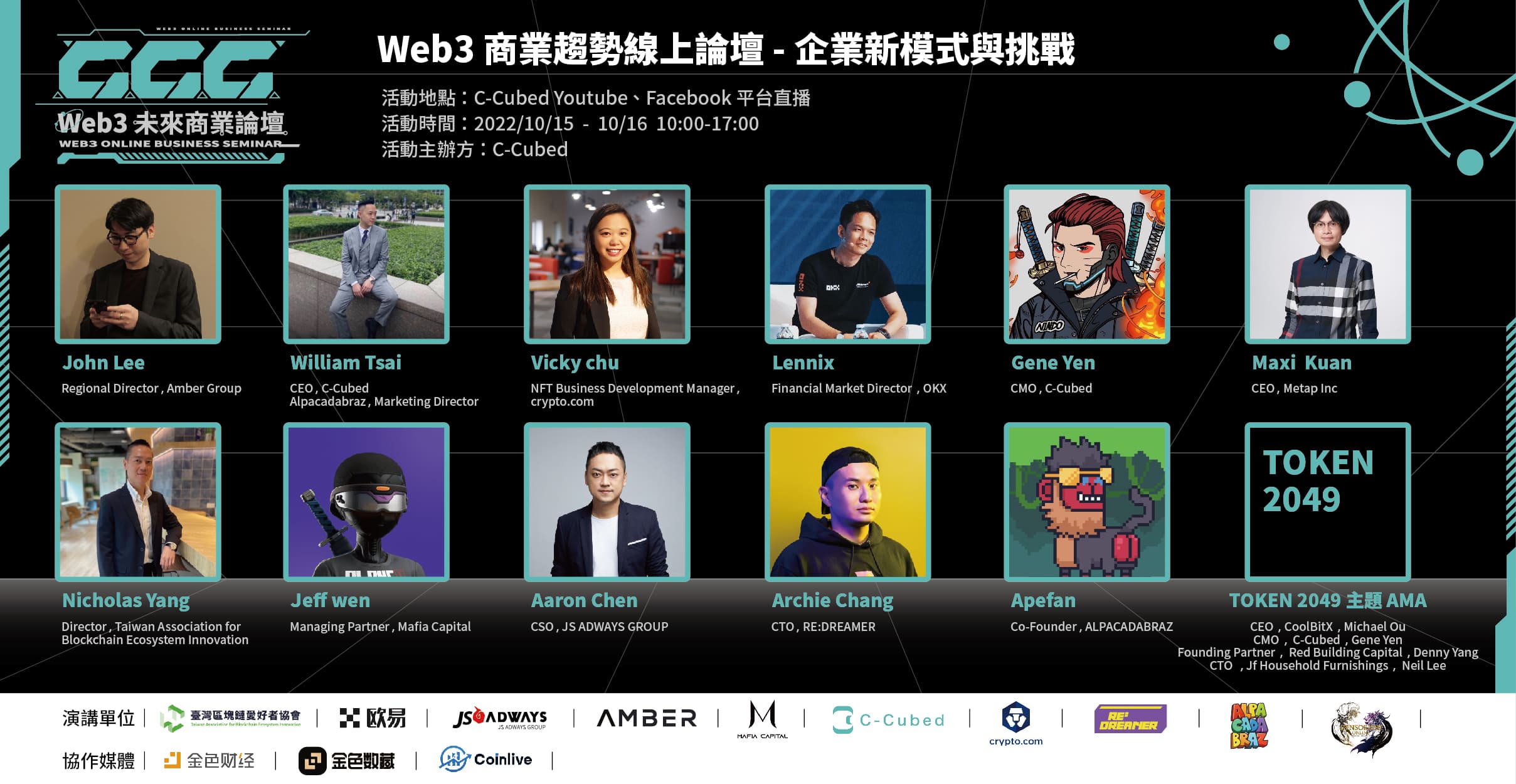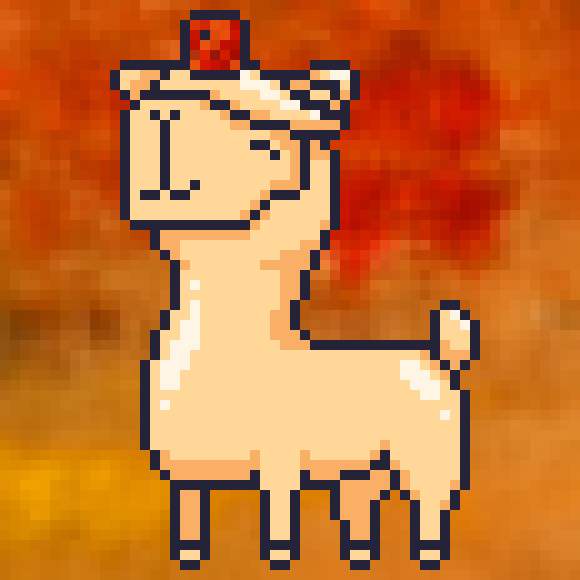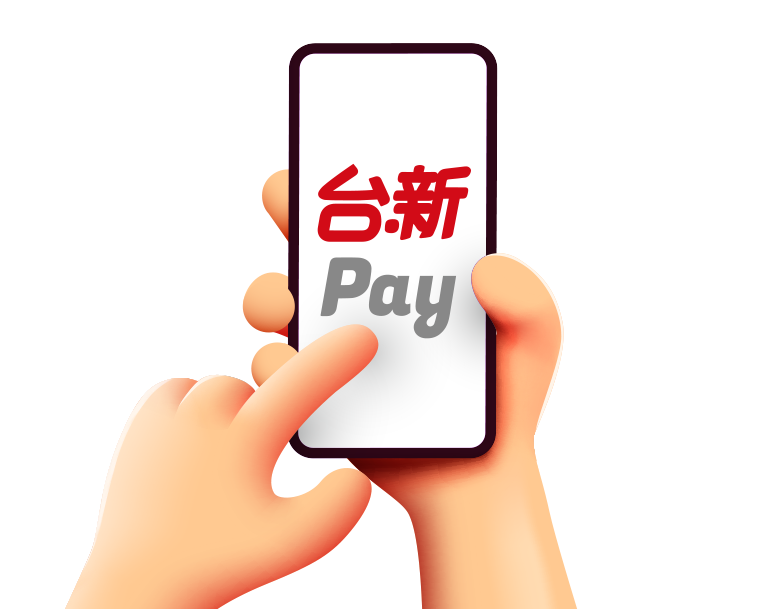To satisfy consumer demand, brands must ride the wave's crest and look for novelty and transformation. Even a brand that has been in business for a century is still looking for impressive and meaningful ways to communicate with customers in order to gain the love of the Z generation so as to establish an unshakable position in the hearts of consumers. NFT enables true "digital ownership", allowing brands to sell their products and services while providing consumers with a unique experience, turning NFT into a popular brand marketing tool!
The first wave of NFT marketing cases were mainly focused on the creation of PFP (Profile Picture), photography and other digital art and collectibles. And as time progresses, more and more brands are joining in the battle of NFTs. The marketing budget for NFTs from brands has not decreased despite the current bear market in cryptocurrency prices, and more practical features and gameplay are now available. C-Cubed, a professional NFT marketing firm, breaks down NFT marketing cases into the following six practices:
|目錄|
Category 1: Selling digital artwork NFTs to raise funds and communicate the brand's message.
Category 2: Selling digital artworks NFTs and building Web3 brand community
Type 4: Offering free NFT to bring in existing customers and expand new Web3 customer base
Category 5: Inviting customers to play branded games to get NFTs (Play to earn)
Returning to the main issue: Will your brand's NFTs inspire consumers to own them?
Category 1: Selling digital artwork NFTs to raise funds and communicate the brand's message.
The purpose of these NFT marketing cases is to communicate their brand values and messages. NFT artworks are photos, music, animations, virtual objects, or microfilms created using brand aspects such as celebrity products, brand stories, and brand-related user-generated content (UGC). They are typically released at special festivals (User Generated Content). Royalty proceeds are usually donated.
- NFT Brand Case|Gucci: Aria NFT, which was made from Aria, a documentary created to celebrate Gucci's 100th anniversary, was auctioned at Christie's, a luxury art auction house, for $25,000, creating buzz among the target audience. Aria is also the name of a Gucci product line. All royalty proceeds were donated to UNICEF USA to support the COVAX initiative for global equitable access to the Covid-19 vaccine.
- NFT Branding Case|Coca-Cola: Coca-Cola released the "Friendship Loot Box" NFTs on International Friendship Day, featuring four NFTs made with brand elements that were turned into digital files, including a bottle opener, a vintage Coke vending machine, a replica of a classic friendship card from 1948, and a virtual jacket that can be worn in the metaverse. NFT holders will also have a chance to win a Coca-Cola co-branded SMEG refrigerator and a hidden Easter egg. A record of US$575,000 was set during the NFT auction, and all royalty proceeds during and after the auction were donated to Special Olympics International to convey the image of a friendly and caring brand.
In celebration of Pride Month 2022, Coca-Cola launched the "Pride Collection" NFT on June 30, collaborating with South African fashion designer and LGBTQIA+ advocate Rick Minsi to create 136 different Coke bottle art NFTs, with all proceeds from the auction and subsequent royalties donated to OUT, a South African LGBTQIA+ organization.
A "Friendship Loot Box" NFT was released on Friendship Day, with all proceeds donated to Special Olympics International. (Image credit: Coca-Cola)
Category 2: Selling digital artworks NFTs and building Web3 brand community
This kind of NFT usage more closely resembles how native NFT brands (such as BAYC, Boring Ape Yacht Club) started to rise to prominence. Brands must create a collection of NFTs that have collectible value, are useful in both the digital and physical worlds, and function like a digital pass that enables consumers to hold NFTs and access a range of social benefits. In order to create a strong community, both the white paper and the utility must be very comprehensible, compelling, and maintain NFT's rarity.
- NBA: NBA Top Shot is a collection of NFT player cards that enhance the conventional paper player cards. In addition to adding numerous features, Top Shot also records the player's highlight "scoring video" and provides information about the player and the game. There are three types of cards, Common, Rare and Legendary, according to their rarity and the number of cards issued. The cards of famous star players such as Stephen Curry and LeBron James were snapped up by fans and investors at sky-high prices.
Even though the price of Top Shot NFT has dropped, it has created a good brand community predisposition, and those who stay are the fans who really love basketball. The NBA hopes to use the NFT to communicate more deeply with fans by holding a flash drawing in the Discord community and giving them feedback based on how active they are in the community.
There are times when players meet and greet each other in the community, and the interaction between members is quite active. NBA officials also encourage members to serve as "Team Captains," or community managers and be responsible for the daily maintenance of the community and local events. Members even watch games together as a group, just like friends.
The NBA player card NFT with a very active Discord community. (Image credit: NBA)
Category 3: Offering free NFTs to customers to entice them to join already-existing membership programs
As most users are not currently part of the Web3 blockchain, some brands use NFT to drive fans to participate in Web2 online marketing or use NFT as an incentive to attract fans to join existing official brand websites as a way to deepen customer loyalty or maintain customer relationships. Take the following beauty and cosmetic brands' NFT marketing as an example:
- Clinique: Clinique debuted the "Meta Optimist" NFT in October 2021, using the color and moisturizing "molecules" of Clinique's popular products as the exterior of the NFT. To obtain the NFT, you must first complete two steps. The first is that it is required to register as a member of the Clinique website (join the Clinique Smart Reward loyalty program), and the second step requires participation in an essay contest, sharing positive and optimistic stories about yourself on social media websites such as Instagram, TikTok, etc., either via video or via pictures, and adding the designated hashtags # MetaOptimist, #Clinique and #Contest. The final three winners will be chosen to receive a Clinique NFT and an annual supply of a set of free Clinique products for ten years.
Type 4: Offering free NFT to bring in existing customers and expand new Web3 customer base
Most users are not currently on the Web3 blockchain network, so some brands are trying to get new Web3 customers by sending NFTs for free. On the other hand, if brands want to get their existing fans to join the NFT world and create a Web3 community together so that they can have a real impact on the Web3 landscape, sending NFT to their fans for free is a very smart move. The most famous example in Taiwan is A-Mei giving away aMEI ASMR NFT for free to fans who buy tickets to A-Mei's world tour concerts.
- NFT Brand Case|Estée Lauder: Estée Lauder sent 10,000 NFTs of the classic product "Advance Night Repair" on the metaverse platform, Dencentraland, on Fashion Week, which can not only be worn in the metaverse, but can also be exchanged for a physical copy of the Advance Night Repair offline, successfully creating a metaverse brand experience and reaching new customers.
- NFT Brand Case | Nars: The French cosmetics company, Nars, worked with three female artists to launch Nars "Orgasm Blush" NFT in three different price ranges: free, $50, and $500. Those who purchased the paid NFTs received limited-edition goods from Nars. Within 10 minutes of going on sale, the $500 version of NFT was sold out. A total of 2,000 NFTs were casted during the public sales period, which successfully generated buzz among customers and the Web 3 community.
- NFT Brand Case|Salvatore Ferragamo: Salvatore Ferragamo, the Italian luxury apparel brand, distributed free NFTs in its New York brick-and-mortar concept store, where customers could interact with the digital mirrors set up in the store and receive NFTs issued by the brand in collaboration with digital artist Shxpir and design studio De-Yan. Limited to 256 units, customers needed to enter their e-mails to unlock the brand's video content and use a cryptocurrency wallet account to receive their free NFTs. Although the NFT is not yet functional, it has served the purpose of pulling customers from brick-and-mortar stores into the Web3 community.
Category 5: Inviting customers to play branded games to get NFTs (Play to earn)
Play to earn means to earn NFTs while playing games. The blockchain game Axie Infinity, which became popular in 2021, attracted public attention because of its play-to-earn model. You can participate in the games created by the brands, whether your goal is to make money playing games or to collect NFTs because you love the brands. Brands have seized the chance to investigate the potential of the gaming economy as a result of the deeper connection between customers, potential customers, and brands.
- NFT Brand Case|Louis Vuitton: In August 2021, LV launched "LOUIS: The Game," a mobile game to commemorate the 200th birthday of its founder, Louis Vuitton, and gave players the opportunity to acquire the brand's "Louis 200" NFT while playing the game. The scenes and characters of the game are designed with LV brand elements, giving brand fans the opportunity to collect the appearances and equipment of characters and postcards inside. Sources pointed out in April this year that the game was downloaded 2 million times, a minor update was released, and an additional 10 new NFTs were distributed.
- NFT Brand Case | BURBERRY: Burberry collaborated with the Web3 game developer Mythical Games on the online game "Blankos Block Party," creating a limited edition of the game character "Shark B" NFT as well as other equipment NFTs for players to collect and resell in-game. By working with the professional NFT marketing team, players can interact with brands in a highly playable game, creating a unique brand interaction experience. (Did you know that Taiwan has NFT marketing companies that are experts in this field? Click here to learn about C-Cubed.)
Category 6: Selling virtual merchandise NFTs to create a brand interactive experience in the metaverse.
Brands are eager to bring the real world to the metaverse, designing and selling NFT virtual goods (real estate, avatars and their accessories, such as shoes or cosmetics) that allow brand users to wear their favorite brands in the virtual world. These NFTs allow the holder to make adjustments to their appearance and can be exchanged 1:1 for the same physical object as the virtual object, which is fun and exciting.
- NFT brand case|Nike: Since acquiring the 3D virtual art RTFKT Studios, the company has launched a series of NFT marketing campaigns, including the release of 20,000 3D virtual characters NFTs in collaboration with Takashi Murakami's "CloneX" and the follow-up airdropped virtual sneaker NFTs "RTFKT Studios x Nike Dunk Genesis CRYPTOKICKS," allowing NFT holders to use the virtual characters in Zoom video conferences or games, and even to change into Nike Dunk virtual sneakers, creating a complete metaverse ecosystem for the virtual characters. In April of this year, the "RTFKT x Nike AR Genesis Hoodie" project was announced to create an AR version of the co-branded cap, T. Both the previous virtual sneakers and the co-branded cap T will be specifically produced to give customers of the brand a new experience.
The NFT marketing team, RTFKT, developed the NFT marketing campaign, CloneX, and its subsequent NFTs. It has become an active community of Web3 native IP. They also held the "RTFKT Creators" competition in Discord, encouraging people to use their own NFTs to create more rich designs and styles such as virtual characters and virtual sneakers.
- NFT Brand Case|Clinique: Clinique released the NFT marketing campaign, "Metaverse More Like Us," in June 2022, and collaborated with Daz 3D animation studio to launch 8,888 different virtual character NFTs, including women (non-binary gender) with multiple skin tones and physical challenges, such as vitiligo, loss of mobility or hearing or Down's syndrome, hoping that the metaverse will be more reflective of the real world in its diversity, as the current metaverse is still monotonous and binary, and there are very few female participants.
These virtual characters are also known as NFPs (Non-Fungible People). NFT holders can use these NFTs not only as PFP displays, but also for practical use in the multiverse. For example, avatars can reflect the actual expressions of individuals speaking during video conferences, which can also be used in game engines such as Unity or Unreal.
It's interesting that Clinique worked with three makeup KOLs, each of whom created two makeup looks for the virtual character using Clinique products. The ideas behind the makeup looks were made available to the public on social media. The first wave of 5,904 makeup look Mystery Box NFTs were randomly airdropped to NFP holders. Between July and September 2022, 1968 makeup look Mystery Boxes designed by three designers were released. The makeup look is rarer the later it was released. Holders can choose to keep the makeup look NFTs, sell them in the secondary market, or combine it with their own avatar NFP. In keeping with Clinique's commitment to offering cosmetic services for people of all skin tones and a variety of appearances, this NFT marketing campaign not only reinforces the public's image of the brand, Clinique but also promotes its products in a fun way. Customers can buy Clinique products whether they have an NFP or not, but people with Clinique NFPs and virtual makeup look who visit a brick-and-mortar store to buy Clinique cosmetics create a unique brand experience.
These six key strategies for NFT marketing cases are not exclusive of one another. Many NFTs span several brand marketing functions at the same time, and there are many more ways to play with NFT marketing cases than can be included. (Feel free to come to the most down-to-earth NFT marketing team, C-Cubed, to have a discussion). When users purchase NFTs, they receive both digital and physical Utilities. In addition to playing with offline physical activities and redeemable tangible objects, some NFT marketing companies also open up digital rights to holders for secondary creation or even commercial use, bringing profits to customers and free publicity for brands, and bringing endless business opportunities for the birth of valuable new IPs for brands.
Big brands have long been the first to move towards the metaverse, eager for brands to establish a place in it. In the metaverse, the line between games and reality is gradually blurred, and people can use their own avatar NFPs to interact with their family and friends in the real world, and even own real estate, cars, clothes, shoes, etc. in the game world. At the same time, people can travel through multiple online games and even earn NFTs (Play to earn) while playing, just as they are paid to work in the physical world.
Returning to the main issue: Will your brand's NFTs inspire consumers to own them?
Brands need to think about what value their NFTs provide to their customers. If the conversion is made only with the format of exchanging goods or services, it is not necessary to use NFT to create them. Instead of just caring about the profits from used resale, NFT brand marketing aims to create a product that inspires interaction between the customer and the brand, making the customer feel excited and wanting to keep returning to the community.
The value of NFTs ultimately comes from the contribution of an active community, and the brand is simply providing an environment in which the community can thrive for the purpose of long-term brand marketing. Although brands cannot influence the rise and fall of NFT prices, they must maintain its scarcity to sustain its worth and continue to act as an incentive for the community to collect.
The true value lies in the variety of business models, and this represents the closest approximation to the changing times since the advent of the Internet. Again, you don't need to be an NFT player or spend a lot of time studying cases. Just...leave it to the professionals.
Get in touch with C-Cubed today and let us create an amazing branded NFT campaign for you.




